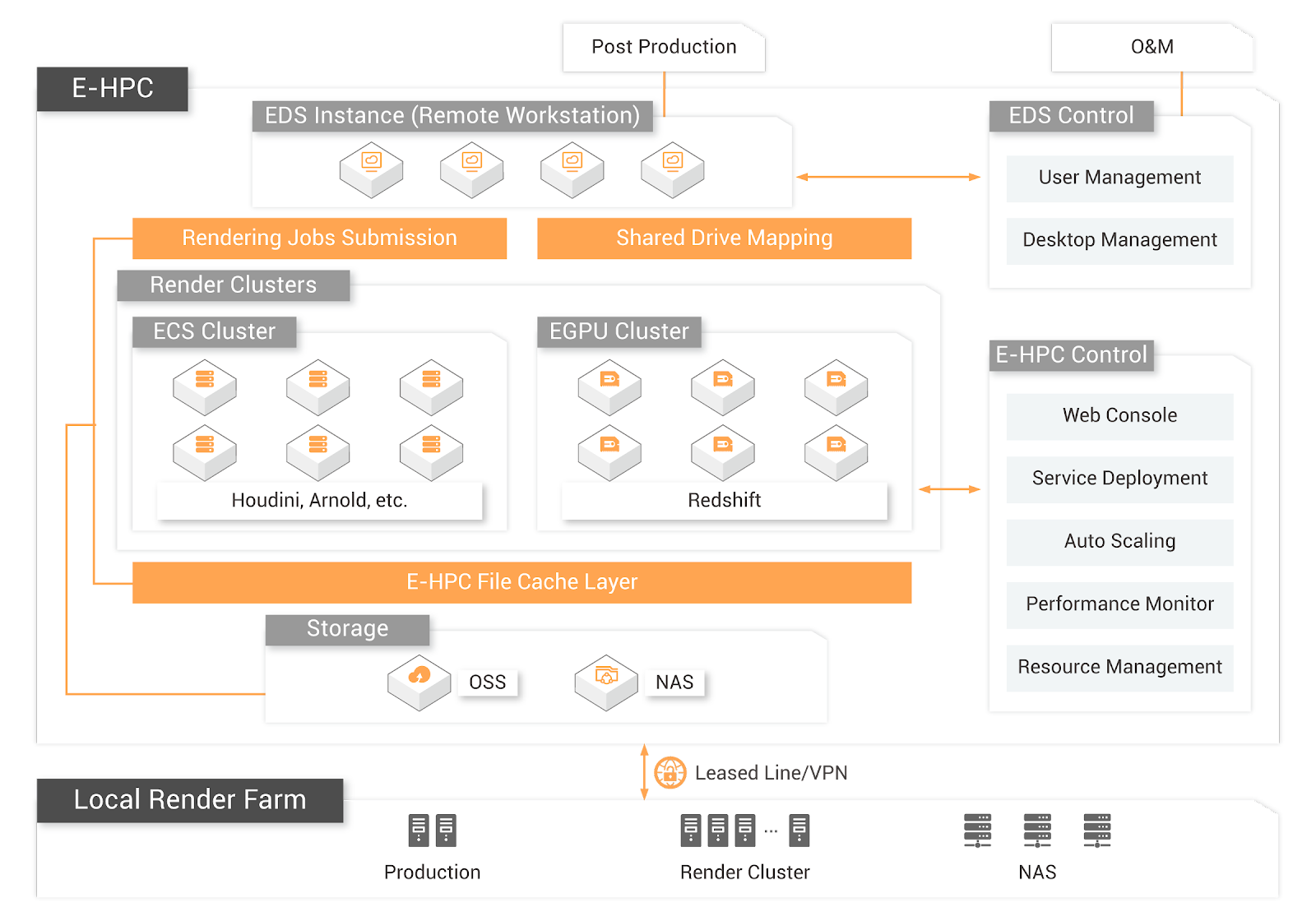From exploding into mainstream consciousness in the 1980s and maturing over the following decades, 3D rendering – translating information from a 3D model into a two-dimensional image – is now integral to movies, games and animation, as well as professions such as architecture, interior design and marketing.
Like many innovations, rendering started with humble beginnings: in 1972, Ed Catmull, one of the founders of the storied studio Pixar, reportedly helped create the first 3D-rendered film: an animated version of his hand. Decades on and movies like Toy Story showed how 3D rendered visuals could complement narrative, characterization and other elements to provide a compelling storytelling experience.
Beyond entertainment, 3D rendering is helping skilled professionals such as architects create accurate impressions of a development before any physical work has commenced, while marketers can create visual impressions of products to give customers an accurate, detailed view of what they are considering purchasing. The 3D rendering market is growing rapidly – according to one analyst firm, the sector is likely to climb to $3083.9 million by 2027, from USD 1295.3 million in 2020, at a CAGR of 12.7% during 2021-2027, fuelled by growth in sectors such as marketing and advertising, research and training, gaming and videography.
Broadly speaking, rendering is broken into two types: offline or pre-rendering used to create movie-quality images or images of an extremely high standard, and real-time rendering used to generate images within milliseconds to support use cases such as gaming, data visualization and augmented or virtual reality applications. The types of rendering processes range from basic wireframe rendering to scanline rendering, ray tracing and radiosity.
While the images created through real-time rendering are generally less realistic than those generated through offline rendering, advances in technology are continuing to drive up the quality of real-time rendered images. As innovative developments such as the metaverse – expected to stimulate the use of augmented and virtual reality, as well as other technologies – build towards mainstream acceptance, the impetus to improve 3D-rendered image quality will only become stronger.
The cloud is playing an integral role in the rendering revolution. Remote rendering enables studios to extend ‘render farms’ – the high-powered computer system or clusters used to render computer-generated imagery for visual effects – from on-premises into the cloud, ensuring availability of resources even during high periods of utilization.
These resources are accessible over high-speed internet and billed according to demand, ensuring studios can manage costs effectively. Ideally, the cloud service should help allocate and release render instances and clusters automatically, based on real-time workload demands. This capability can offset – and potentially, in the longer term, replace – the capital and resource-intensive on-premises render farm, enabling studios and artists to focus on creativity and innovation rather than on maintenance and management.
To fully meet the needs of studios, artists and other stakeholders, the cloud platform must also be secure – essential to protect valuable intellectual property from theft or leakage – and able to be integrated fully with user toolkits such as Deadline and PipelineFX Qube, as well as applications such as Houdini, Arnold and RedShift.
Furthermore, managing the cloud-based environment efficiently requires a centralized console to present the studio with full visibility of the infrastructure and services.
Alibaba Cloud Remote Rendering incorporates these features and enables studios to improve computing throughput by 24M packets per second and 600K input/output operations per second – helping enhance overall rendering by up to 40%. The solution also helps prevent data leaks and protect user data and privacy by incorporating compute and desktop services that feature availability of 99.9% plus and advanced security measures respectively, as well as help reduce the total cost of ownership of high-performance render farm infrastructure.

The Alibaba Cloud Remote Rendering solution enables studios to complete complicated rendering jobs on powerful cloud computing clusters with super-fast connections and high elasticity.
Studios can synchronize data between on-premises render farms with Alibaba Cloud at high speeds through a leased-line or VPN, or connect directly to render clusters and cloud storage. A cache layer delivered through Elastic High Performance Computing (E-HPC) caches active data stored on Alibaba Cloud Network-Attached Storage (NAS) and Object Storage Service (OSS) to avoid frequent data access to on-premises NAS.
Studios can choose Elastic GPU Service clusters for render applications such as Redshift, or Elastic Compute Service (ECS) clusters for render applications such as Houdini and Arnold. These render clusters can be integrated with the rendering scheduler toolkit, such as Deadline and PipelineFX Qube, to boost efficiency. E-HPC can dynamically scale the number of nodes and clusters automatically according to real-time workload demands, while running other jobs. Rendering jobs are submitted to Alibaba Cloud Elastic Desktop Service instances, with a GPU-accelerated desktop service operating as the remote post-production workstation. During the rendering process, ECS and EDS provide highly reliable data storage and effective protection, such as encrypted remote protocols, to prevent data leaks.
As with almost all industries, the coronavirus pandemic forced the visual effects industry into the rapid implementation of remote working at scale. However, the need to use high-specification workstations for compute and image processing; the requirement to transfer 100TB-plus files across a network; and the need to secure data and highly sensitive visual effects assets by accessing them via an intranet, presented considerable challenges to artists, studios and other firms.
Cloud-based solutions in combination with other technologies are helping studios and other organizations adapt to these challenges, as the measures implemented during the pandemic translate into longer-term hybrid working models designed to enable artists to move seamlessly between home and the office and continue to collaborate effectively, with no impact on access or productivity. Through the cloud, artists can connect to workstations in office locations from standard personal computers and notebooks to work as normal, while files are not sent across networks to multiple locations. This blog showcases how the VFX artists of the Wandering Earth used Alibaba Cloud to get back to work during the pandemic, using a solution based on Alibaba Cloud EDS and EGPU.
With Alibaba Cloud Remote Rendering and services such as EDS, visual effects studios, artists and other creative professionals can access the resources needed to meet growing demand for 3D rendering, while accommodating changes to the way people work in the post-pandemic era.
Which AI-Powered SaaS Providers and Solutions Can Unleash the Potential of Your Business?
The Metaverse: Why the Sceptics Are Wrong and the Hype Is Justified
30 posts | 2 followers
FollowApsaraDB - September 21, 2022
Alibaba Clouder - July 15, 2020
Alibaba Clouder - March 16, 2020
Marketplace - April 28, 2021
Alibaba Clouder - April 12, 2019
PM - C2C_Yuan - August 29, 2023
30 posts | 2 followers
Follow Remote Rendering Solution
Remote Rendering Solution
Connect your on-premises render farm to the cloud with Alibaba Cloud Elastic High Performance Computing (E-HPC) power and continue business success in a post-pandemic world
Learn More Alibaba Cloud Drive Solution
Alibaba Cloud Drive Solution
Build your cloud drive to store, share, and manage photos and files online for your enterprise customers
Learn More Metaverse Solution
Metaverse Solution
Metaverse is the next generation of the Internet.
Learn More Database Gateway
Database Gateway
A tool product specially designed for remote access to private network databases
Learn MoreMore Posts by Iain Ferguson